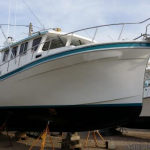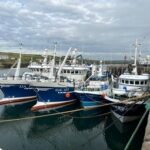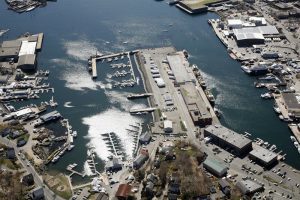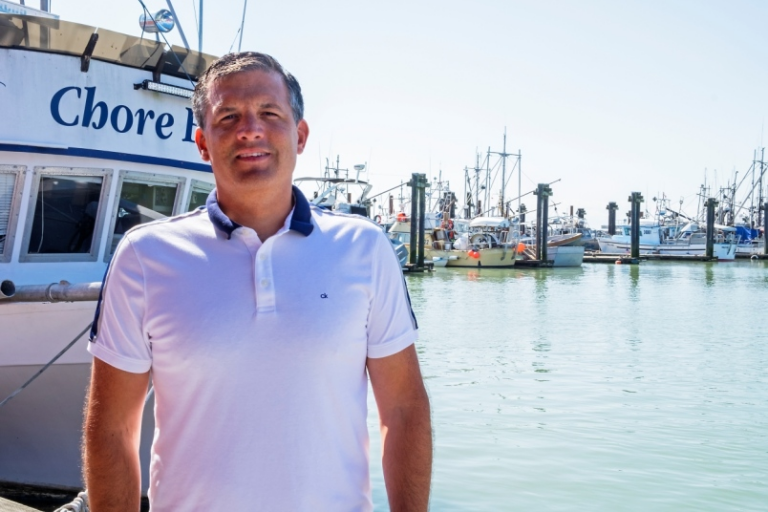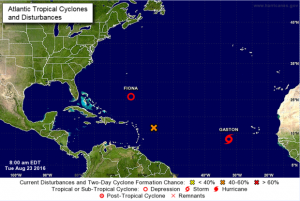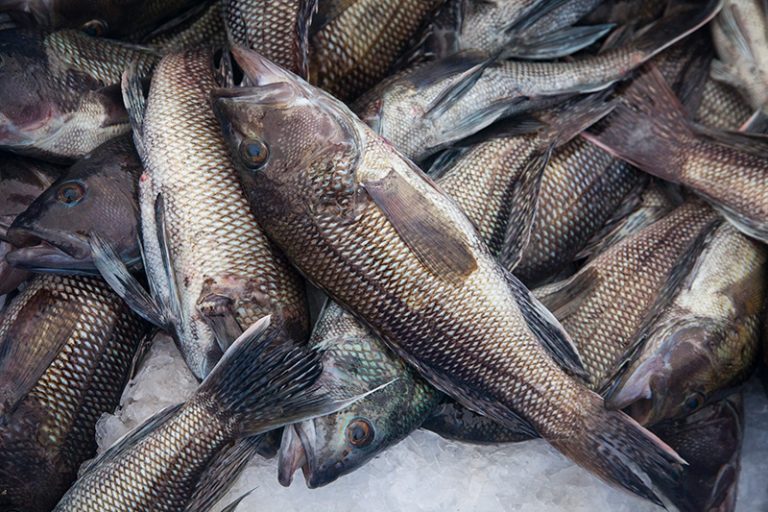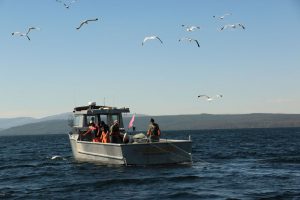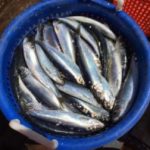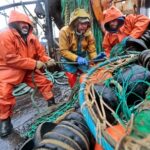Tag Archives: commercial fisheries
N.S. spends $6.5M on fund to reduce emissions from boats, commercial fisheries
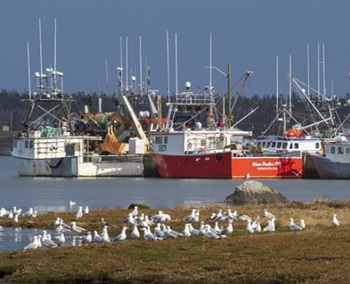 Nova Scotia is seeking to cut down on greenhouse gas emissions from the seafood sector with a greenhouse gas emissions. According to a news release from the province, the Fisheries and Aquaculture Energy Efficiency Innovation Fund will support initiatives to reduce emissions from boats, buildings, aquaculture operations and commercial fisheries. “Our industries are already leaders in fighting climate change through the investments they’re making to reduce energy use,” said Kent Smith, minister of fisheries and aquaculture, in the release. more, >>CLICK TO READ<< 07:18
Nova Scotia is seeking to cut down on greenhouse gas emissions from the seafood sector with a greenhouse gas emissions. According to a news release from the province, the Fisheries and Aquaculture Energy Efficiency Innovation Fund will support initiatives to reduce emissions from boats, buildings, aquaculture operations and commercial fisheries. “Our industries are already leaders in fighting climate change through the investments they’re making to reduce energy use,” said Kent Smith, minister of fisheries and aquaculture, in the release. more, >>CLICK TO READ<< 07:18
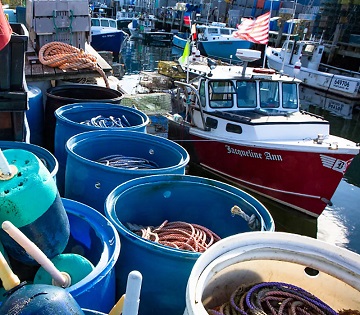
Maine’s seafood harvest has fallen 120M pounds since 2012
At 197 million pounds for all commercially harvested marine species, 2022 was the first time since 1975 that Maine’s reported annual seafood harvest has fallen short of 200 million pounds. In fact, the cumulative volume of Maine’s commercial fisheries dropped by more than 120 million pounds between 2012 and 2022, state data show. Patrick Keliher, head of the state’s Department of Marine Resources, said there are myriad reasons why fishery landings have declined — some regulatory, others environmental. Meanwhile, landings of lobster, which remains the state’s dominant fishery despite looming restrictions to better protect whales, have dipped in recent years but still are much higher than they were prior to the 1990s. >click to read< 09:12
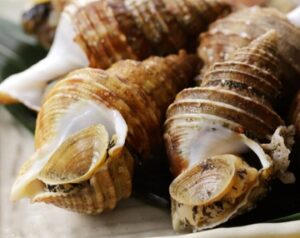
New Regulations for Whelk and Horseshoe Crabs a Challenge for Commercial Fisheries
New state regulations intended to rebuild the whelk and horseshoe crab populations in the Long Island Sound could substantially limit the catches of local fisherman. Davis said that the department had done surveys trawling different areas of the Long Island Sound each year. Asked about the proposed regulations, Bob Guzzo, a commercial fisherman out of Stonington who catches whelk, said he thought the regulations were unnecessary, and that the department shouldn’t be involved in making them. He said that the whelks come and go in cycles. Guzzo said he believed the trawl surveys were inaccurate. >click to read< 14:16
CT DEEP Proposing New Rules For Lobster, Striped Bass, Others – The proposed regulatory changes are intended to address the “depleted state of these ecologically and economically important species in Long Island Sound,” according to DEEP officials. >click to read< 17:02
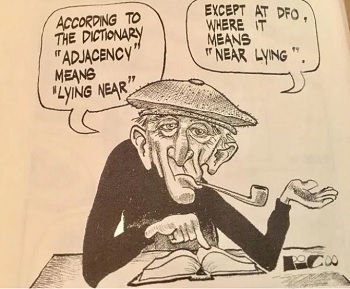
Fishing for votes: parties don’t have much to say about wild fisheries (other than B.C. salmon)
Three of the country’s mainstream federal parties – Liberals, Conservatives and NDP – specifically mention Pacific salmon in their election platforms, but no mention of East Coast stocks. Here’s the skinny on what the parties have to say about commercial fisheries. Liberal platform: You’ll find mention of Canada’s commercial fisheries on Page 50 in the Cleaner, Greener Future chapter,,, Conservative platform: Fisheries gets its own heading on Page 36 of the federal Conservative platform, and starts off strong with this statement,,, NDP platform: Fisheries is found under the Building Canadian Industries and Supporting Good Jobs section on page 38,,, >click to read< 15:11

It’s Important! N.J. cleared to provide $11M in relief for sinking fishing industry
Months after the pandemic rocked New Jersey’s fishing industry, millions of dollars in federal coronavirus relief is set to finally flow to the anglers that need it. The National Oceanic and Atmospheric Administration has approved New Jersey’s plan to spend $11.3 million in federal fisheries relief, U.S. Rep. Frank Pallone, D-6th Dist., announced Tuesday. The approval allows state authorities to begin distributing the money, which was allocated to the state as part of the $2 trillion CARES Act that became law in March. >click to read< 09:25

Commercial fishing sails into final chapter
The final nail in the coffin? According to the news, the traditional mom-and-pop style operations would move out of the Great Lakes for good, and leave the door open only for large, investor-style operations to take over the industry. “What it does, it finally just chokes us out,” said Amber Peterson, operator of The Fish Monger’s Wife, one of the remaining commercial fisheries. “It doesn’t even offer us the dignity of a quick death.” >click to read< stories related to this post, >click here< 10:15
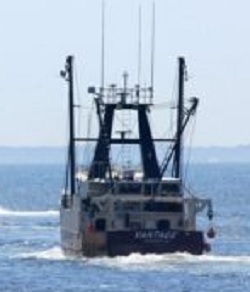
Mass Senators want an additional $500 Million in CARES Act Coronavirus Fisheries Assistance Funds
In their June 5 letter, the senators said $28 million in fisheries assistance already allocated to Massachusetts should be supplemented as the pandemic continues to affect demand through the summer month’s peak harvests. “Compared to the previous five-year average, in March and April of this year, Massachusetts bivalve shellfish landings lost 60 percent of their value, lobster landings lost 40 percent of their value, recreational head boats have been completely shut down, and seafood processors have lost their usual restaurant market,” the letter stated. >click to read< 11:25

FISH-NL: Confederation’s greatest failure – It’s Canada’s dirty little secret.
“Seventy years after Confederation and the state of most of our commercial fisheries is an embarrassment and national shame,” says Ryan Cleary, President of FISH-NL. “It’s Canada’s dirty little secret. The marriage has failed us in terms of fisheries management.” Five years after Newfoundland joined Canada in 1949 complete management control of the commercial fisheries was handed over to the federal government. Forty-three years after that, in 1992, saw the collapse of northern cod, and the introduction of a commercial fishing moratorium that resulted in the biggest layoff in Canadian history. >click to read<13:43
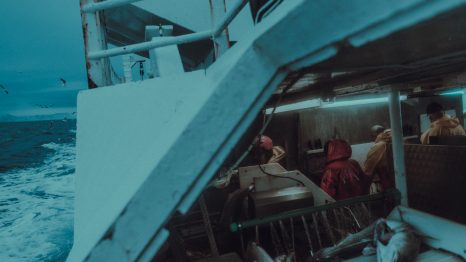
12 hours on a fishing trawler in Iceland.
It was about 5:30 am when we boarded the fishing trawler. The slick deck of the boat was barely visible under the dim sodium vapor lamps as we were greeted by handshakes and warm good mornings from the crew members. The night before, my Italian producer and I had driven 2.5 hours from Reykjavik after a night of drinking. We’d barreled along desolate, straight highways to a small homestay where an elderly Icelandic man had shuffled us into a room lined with bunk beds before setting off to sea. We’d missed every famously photographed landmark in Iceland on this trip, but the ensuing 12 hours on an Icelandic fishing trawler made it all worthwhile. Photo article, >click here< 10:15
Alaska fisheries thrive — yet industry is on the edge
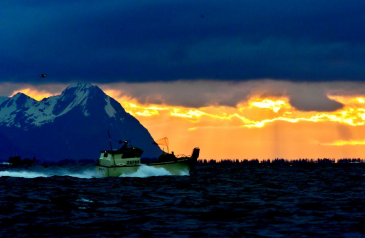 It has been a really good year across most of Alaska’s commercial fisheries. Salmon prices are up, harvests are good, fuel costs are down, and there’s more: The world’s appetite for nutritious, wild-caught Alaska fish, caught in clean waters, is growing. Alaskans’ track record for managing fisheries in a sustainable manner, both near-shore and further at sea, reinforces our reputation for responsible stewardship. Life is good.,,, Seafood employed 56,800 workers in 2015-2016 and this industry annually contributes $5.2 billion to the state’s economic output. But as good as this sounds, the fact is that this traditional industry is actually fragile,,, click here to read the story 21:45
It has been a really good year across most of Alaska’s commercial fisheries. Salmon prices are up, harvests are good, fuel costs are down, and there’s more: The world’s appetite for nutritious, wild-caught Alaska fish, caught in clean waters, is growing. Alaskans’ track record for managing fisheries in a sustainable manner, both near-shore and further at sea, reinforces our reputation for responsible stewardship. Life is good.,,, Seafood employed 56,800 workers in 2015-2016 and this industry annually contributes $5.2 billion to the state’s economic output. But as good as this sounds, the fact is that this traditional industry is actually fragile,,, click here to read the story 21:45
Fish and Game wants to operate counting projects, test fisheries regardless of shut down
 Alaska’s Department of Fish and Game is planning to continue running major commercial fisheries, like Bristol Bay, regardless of a potential government shutdown. Commercial Fisheries Director Jeff Regnart said the plan right now, pending approval by the Department of Administration, is to keep managers and tools in place to run Bristol Bay salmon fisheries this summer. Read the rest here 08:58
Alaska’s Department of Fish and Game is planning to continue running major commercial fisheries, like Bristol Bay, regardless of a potential government shutdown. Commercial Fisheries Director Jeff Regnart said the plan right now, pending approval by the Department of Administration, is to keep managers and tools in place to run Bristol Bay salmon fisheries this summer. Read the rest here 08:58
Deep-sea cameras reveal commercial fisheries having little impact on seafloor biodiversity
 The Australia Antarctic Division has developed a new system of deep sea cameras to explore the impact of commercial fishing on biodiversity. They spent eight years studying the seafloor in the Heard Island and McDonald Island Marine Reserve in the Antarctic waters of the Southern Ocean, south-west of Australia. The cameras show 98 per cent of sensitive seafloor biodiversity remains pristine after 16 years of commercial fishing. Read more here 11:58
The Australia Antarctic Division has developed a new system of deep sea cameras to explore the impact of commercial fishing on biodiversity. They spent eight years studying the seafloor in the Heard Island and McDonald Island Marine Reserve in the Antarctic waters of the Southern Ocean, south-west of Australia. The cameras show 98 per cent of sensitive seafloor biodiversity remains pristine after 16 years of commercial fishing. Read more here 11:58
Menendez – Pallone – Booker Push To Prevent Drilling Off Atlantic Coast – Don’t stop there! No Wind Either!!!
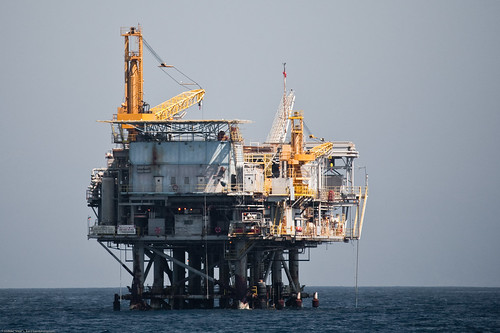 “New Jersey’s tourism, ports, and together support a workforce of more than 1.5 million people. The impact of a major oil spill here would be devastating. We have a duty to keep our coastal economy and our ecosystems safe and sustainable.” Listen and Read more here 21:21
“New Jersey’s tourism, ports, and together support a workforce of more than 1.5 million people. The impact of a major oil spill here would be devastating. We have a duty to keep our coastal economy and our ecosystems safe and sustainable.” Listen and Read more here 21:21
Managers ‘cautiously optimistic’ about Yukon king goals – Strong sockeye catches continue
![]() The 2014 Yukon River king run could come in stronger than managers expected before the season began, they said during a June 24 conference call with Yukon residents. Other commercial fisheries throughout the state are also taking off. Statewide, the commercial catch through June 24 was 5.8 million salmon, including 4.1 million sockeye. Read more here 16:08
The 2014 Yukon River king run could come in stronger than managers expected before the season began, they said during a June 24 conference call with Yukon residents. Other commercial fisheries throughout the state are also taking off. Statewide, the commercial catch through June 24 was 5.8 million salmon, including 4.1 million sockeye. Read more here 16:08
Gulf Coast senators ask for investigation of National Marine Fisheries Service
 Eight senators from coastal states asked the Government Accountability Office to investigate the way the National Marine Fisheries estimates the size of fish populations in U.S. waters. Called stock assessments by the fisheries service, those estimates are used to set annual catch limits for recreational and commercial fisheries. Read more here
Eight senators from coastal states asked the Government Accountability Office to investigate the way the National Marine Fisheries estimates the size of fish populations in U.S. waters. Called stock assessments by the fisheries service, those estimates are used to set annual catch limits for recreational and commercial fisheries. Read more here






 “First of all, we don’t have the population pressures on our coast that Washington and California do,” he said. “So, we have room for commercial fisheries — fleets, processing centers — those are the kind of things that have been the backbone of the Oregon coast for many decades. But, that’s really true now, thanks to the increased demand for the quality seafood that we produce off our coast.”
“First of all, we don’t have the population pressures on our coast that Washington and California do,” he said. “So, we have room for commercial fisheries — fleets, processing centers — those are the kind of things that have been the backbone of the Oregon coast for many decades. But, that’s really true now, thanks to the increased demand for the quality seafood that we produce off our coast.”  SOUTH HADLEY — In 1733, the first recorded retail purchase of 30 Connecticut River shad for a penny apiece in Northampton launched a fisheries industry that continued through the industrial development of the mid-19th century. Commercial fisheries along the Massachusetts reach of,,,
SOUTH HADLEY — In 1733, the first recorded retail purchase of 30 Connecticut River shad for a penny apiece in Northampton launched a fisheries industry that continued through the industrial development of the mid-19th century. Commercial fisheries along the Massachusetts reach of,,, 



























